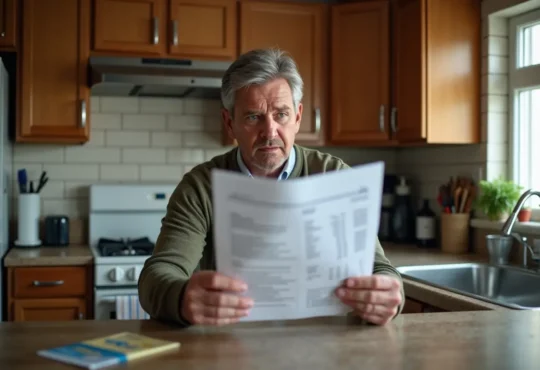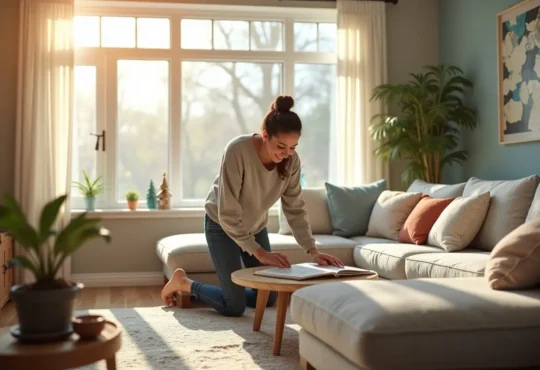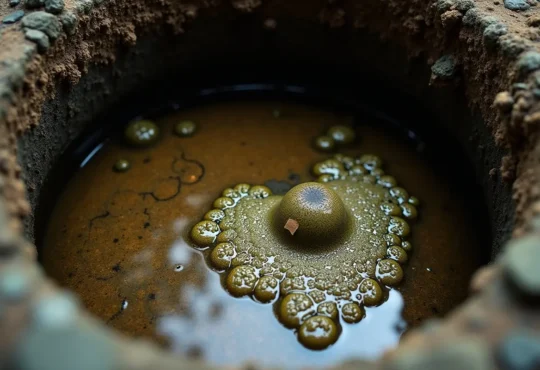
How to Turn Off Water to Toilet
In the realm of plumbing emergencies, few scenarios evoke more panic than a persistently overflowing toilet. As water gushes relentlessly, the threat of extensive property damage looms large. One of the most critical steps in such situations is learning how to turn off the water supply to your toilet effectively.
This article will act as your manual, providing you with the skills and methods to tackle this vital task with confidence.
Contents
- 1 Importance of Shutting Off Water Supply
- 2 Locating the Toilet’s Shut-Off Valve
- 3 Step-by-Step Guide to Turning Off the Toilet’s Water Supply
- 4 Addressing Common Scenarios: No Dedicated Shut-Off Valve
- 5 Propping Up the Float Valve: A Temporary Solution
- 6 Unclogging the Toilet After Turning Off the Water Supply
- 7 Restoring Water Supply After Resolving the Overflow
- 8 Maintaining Your Toilet for Optimal Performance
- 9 FAQs
Importance of Shutting Off Water Supply
Before looking into the mechanics of turning off your toilet’s water supply, it’s essential to grasp the significance of this action. An overflowing toilet can quickly become a nightmare, with water seeping into floors, walls, and rooms. The extensive water damage leads to costly repairs and potential health risks from mold growth.
Furthermore, attempting to resolve a clogged toilet by repeatedly flushing or using chemical drain cleaners can exacerbate the problem. These approaches often introduce more water into an already overwhelmed system, compounding the issue and potentially damaging your plumbing infrastructure.
Shut off the water supply promptly to halt additional flow, contain the situation, and prevent further flooding. This step buys you time to address the overflow’s cause without added stress from continuous spillage.
Locating the Toilet’s Shut-Off Valve
The first step in turning off the water supply to your toilet is locating the dedicated shut-off valve. In most modern installations, the valve is behind the toilet, usually at the base or near the wall connection. It’s usually a football-shaped fixture attached to a pipe or hose leading to the toilet tank’s bottom.
However, it’s essential to note that some older toilet models may lack a dedicated shut-off valve. In such cases, you’ll need to locate the main water shut-off valve for your entire home, which is often situated near the water meter or in a utility room.
Familiarizing yourself with the location of these valves during routine maintenance or home inspections can prove invaluable in an emergency. Consider labeling or marking the valves for easy identification, as every second counts when dealing with an overflowing toilet.
Step-by-Step Guide to Turning Off the Toilet’s Water Supply
Once you’ve identified the shut-off valve, follow these simple steps to turn off the water supply to your toilet:
- Clear the Area: Before proceeding, ensure that the area around the toilet is clear of any obstructions or hazards that could hinder your access to the shut-off valve.
- Locate the Valve: Visually inspect the area behind or near the base of the toilet to locate the shut-off valve. It should be easily recognizable by its distinctive shape and position.
- Turn the Valve Clockwise: With a firm grip, rotate the shut-off valve clockwise as far as it will go. This action will close the valve, effectively cutting off the water supply to the toilet tank and bowl.
- Test the Valve’s Effectiveness: After turning the valve, flush the toilet to confirm that the water supply has been successfully shut off. If the tank fails to refill after flushing, you’ve successfully isolated the water supply.
- Address Stuck or Corroded Valves: In some cases, particularly with older plumbing systems, the shut-off valve may be stuck or corroded, making it challenging to turn. If you encounter resistance, avoid excessive force, as this could damage the valve or cause it to break. Instead, consider using a lubricant like WD-40 or seeking professional assistance from a licensed plumber.
Turning off the water supply is a crucial first step, but it won’t resolve the underlying issue. Once halted, use a plunger or other tools to unclog the toilet. If the clog persists, call a professional plumber to diagnose and address the root cause effectively.
Addressing Common Scenarios: No Dedicated Shut-Off Valve
As mentioned earlier, some older toilet installations may lack a dedicated shut-off valve behind the fixture. In such cases, you’ll need to locate and turn off the main water supply valve for your entire home. This valve is typically located near the water meter or in a utility room, basement, or crawl space.
Once you’ve identified the main water shut-off valve, follow these steps:
- Clear the Area: Ensure that the area around the main water shut-off valve is accessible and free from obstructions.
- Locate the Valve: Visually inspect the area near the water meter or in the designated utility space to locate the main water shut-off valve. It may be a gate valve (requiring multiple turns to close) or a ball valve (needing only a quarter-turn to shut off).
- Turn the Valve to Shut Off Water Supply: Depending on the valve type, either rotate the gate valve clockwise multiple turns or position the ball valve perpendicular to the pipe to cut off the water supply to your entire home, including the toilet.
- Verify Water Shut-Off: After turning the main water shut-off valve, check other water sources in your home, such as faucets or showers, to ensure that the water supply has been successfully isolated.
While turning off the main water supply effectively stops the flow to the overflowing toilet, it also prevents water from reaching other fixtures and appliances in your home. Therefore, it’s crucial to address the issue promptly and restore water service as soon as possible once the overflow has been resolved.
Propping Up the Float Valve: A Temporary Solution
In some instances, you may encounter a scenario where the shut-off valve is inaccessible or inoperable. In such cases, an alternative temporary solution is to prop up the float valve inside the toilet tank. This action prevents the tank from refilling after flushing, effectively halting the water flow.
To prop up the float valve, follow these steps:
- Remove the Toilet Tank Lid: Carefully lift off the lid of the toilet tank, exposing the internal components.
- Locate the Float Valve: Inside the tank, you’ll find a float valve or ball connected to a rod or lever. This mechanism controls the water level in the tank and regulates the refill process after flushing.
- Prop Up the Float Valve: Using a sturdy, non-metallic object like a wooden dowel or a plastic utensil, gently lift the float valve or ball and secure it in an elevated position. This action will prevent the fill valve from opening and allowing water to enter the tank.
- Test the Effectiveness: Once the float valve is propped up, flush the toilet to confirm that the tank does not refill, indicating that the water supply has been temporarily halted.
It’s important to note that propping up the float valve is a temporary solution and should not be relied upon as a long-term fix. This method is best used as a stopgap measure until you can access the shut-off valve or address the underlying issue causing the overflow.
Unclogging the Toilet After Turning Off the Water Supply
With the water supply successfully turned off, you can now focus your efforts on unclogging the toilet and resolving the overflow issue. Here are some effective methods to consider:
- Plunging: Using a sturdy plunger designed specifically for toilets, apply firm downward pressure followed by an upward motion to dislodge the clog. Repeat this process several times, allowing the water level to subside between plunges.
- Plumbing Snake or Auger: If plunging proves ineffective, consider using a plumbing snake or auger to reach deeper into the drain and break up the clog. This tool can be particularly useful for stubborn clogs or obstructions further down the drain line.
- Baking Soda and Vinegar: For milder clogs, a natural solution of baking soda and vinegar can sometimes help break down the obstruction. Pour a cup of baking soda into the toilet bowl, followed by a cup of vinegar. Allow the mixture to fizz and work for several minutes before flushing.
- Toilet Brush and Hot Water: In some cases, a simple combination of a toilet brush and hot water can help dislodge minor clogs. The brush can agitate the clog, while the hot water can help dissolve and flush away the obstruction.
If these DIY methods prove unsuccessful, or if the clog persists, it’s advisable to seek professional assistance from a licensed plumber. Attempting to forcefully clear a stubborn clog can potentially cause further damage to your plumbing system, leading to more costly repairs in the long run.
Restoring Water Supply After Resolving the Overflow
Once you’ve successfully unclogged the toilet and resolved the overflow issue, it’s time to restore the water supply. Here’s how to proceed:
- Reopen the Shut-Off Valve: If you turned off the dedicated shut-off valve behind the toilet, simply rotate it counterclockwise to reopen the valve and allow water to flow back into the toilet tank.
- Turn On the Main Water Supply: If you had to turn off the main water shut-off valve for your home, locate it and turn it back on, either by rotating the gate valve counterclockwise or positioning the ball valve parallel to the pipe.
- Check for Leaks: After restoring the water supply, keep an eye on the toilet and surrounding area for any signs of leaks or residual water. If you notice any issues, promptly turn off the water supply again and address the problem.
- Flush and Test: Once you’ve confirmed that there are no leaks, flush the toilet to ensure that the water supply is functioning correctly and that the tank refills as expected.
By following these steps, you can safely and efficiently restore the water supply to your toilet, returning your plumbing system to normal operation after successfully resolving the overflow issue.
Maintaining Your Toilet for Optimal Performance
While learning how to turn off the water supply to your toilet is a crucial skill, preventing future overflows and clogs is equally important. Regular maintenance and proper usage ensure optimal toilet performance and minimize plumbing emergencies. Here are some valuable tips to keep in mind:
- Avoid Flushing Inappropriate Items: Only flush human waste and toilet paper down your toilet. Refrain from flushing items like feminine hygiene products, baby wipes, paper towels, or other non-biodegradable materials, as these can easily cause clogs.
- Monitor Water Usage: Be mindful of your water usage habits, and avoid flushing the toilet unnecessarily. This practice not only conserves water but also reduces the strain on your plumbing system.
- Regular Cleaning and Inspection: Periodically clean and inspect your toilet for any signs of wear, leaks, or potential issues. This proactive approach can help you identify and address problems before they escalate into more significant issues.
- Consider Water-Efficient Toilets: If your toilet is older and inefficient, consider upgrading to a modern, water-efficient model. These toilets use significantly less water per flush, reducing your water consumption and utility costs while minimizing the risk of overflows.
- Seek Professional Assistance: If you encounter persistent issues with your toilet or suspect a more significant underlying problem with your plumbing system, don’t hesitate to seek the expertise of a licensed plumber. Professional assistance can help diagnose and resolve complex issues before they escalate into costly repairs or water damage.
By following these maintenance tips and being proactive about your toilet’s care, you can minimize the likelihood of overflows and ensure a smooth, trouble-free plumbing experience in your home.
FAQs
How do I turn off the water supply to my toilet?
To turn off the water supply to your toilet, locate the shut-off valve behind or near the base of the toilet. This valve is typically football-shaped and connected to a pipe or hose leading to the toilet tank. Rotate the valve clockwise as far as it will go to shut off the water supply.
Is it safe to turn off water to the toilet?
Yes, it is safe to turn off the water supply to your toilet when necessary, such as during repairs or to address an overflow situation. Turning off the water supply is a crucial step in preventing further flooding and water damage.
Can I still flush the toilet if the water is off?
Once you’ve turned off the water supply to the toilet, you can still flush it to drain any remaining water from the tank and bowl. However, the tank will not refill until the water supply is restored.
Why is the toilet still running when I turn off the water?
If the toilet continues to run or refill after turning off the water supply, it may indicate an issue with the flush valve or other internal components. In such cases, you may need to prop up the float valve inside the tank to temporarily stop the water flow until you can address the underlying problem.
How do I stop water from running into my toilet?
To stop water from continuously running into your toilet, you can either turn off the dedicated shut-off valve behind the toilet or prop up the float valve inside the tank. This action will prevent the fill valve from allowing more water into the tank and toilet bowl, effectively stopping the water flow.





 Hi I'm Joe.
Hi I'm Joe. 